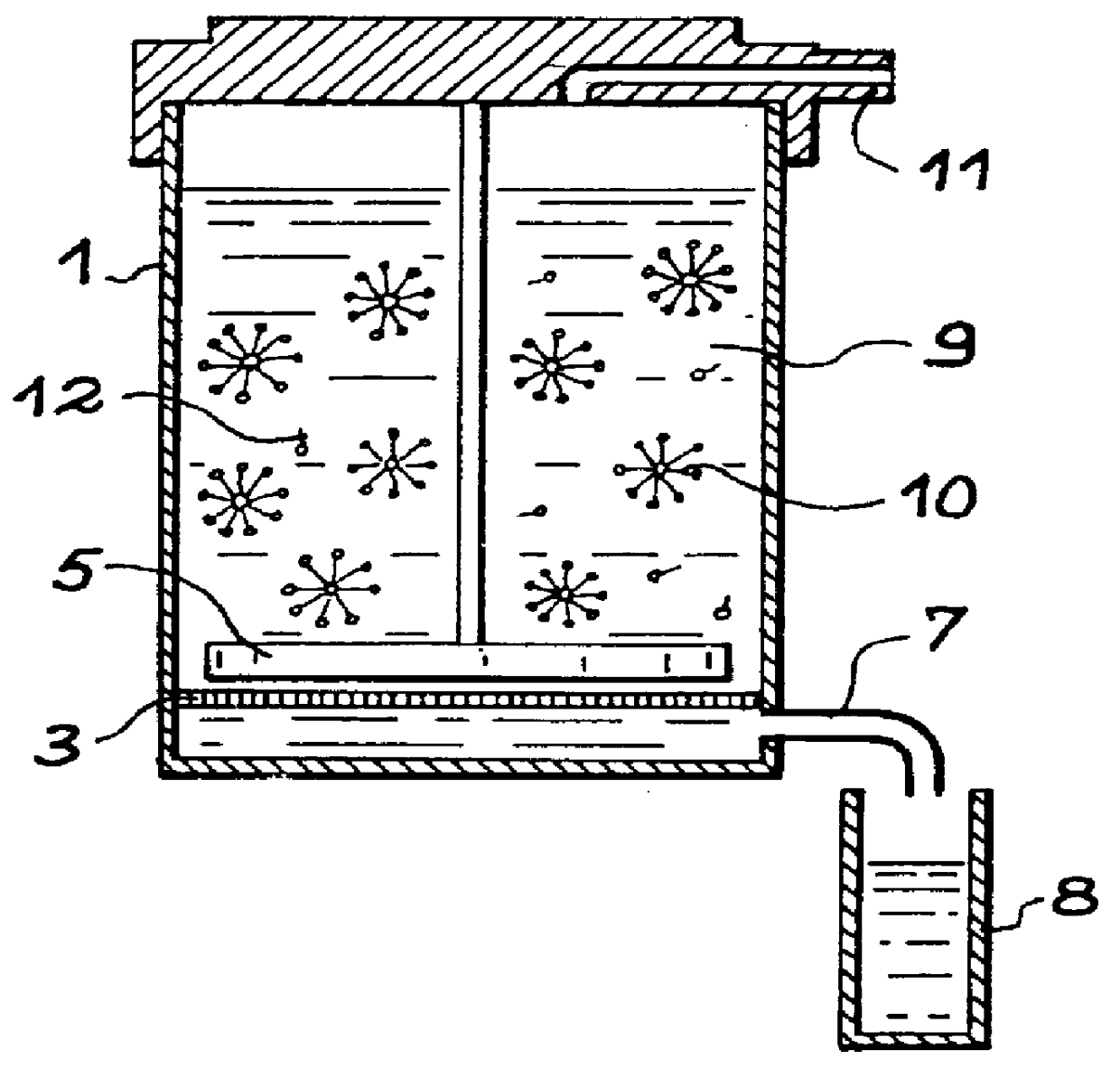Method for separating metals by micellar ultrafiltration that can be used to process radioactive waste
a technology of metal separation and micellar ultrafiltration, which is applied in the separation process, uranium compounds, and membranes, etc., can solve the problems of difficult to obtain a stable system with the surfactant of formula, the surfactant and the ligands used in these methods are not suitable for the removal of metals from solutions with a high nitrate conten
- Summary
- Abstract
- Description
- Claims
- Application Information
AI Technical Summary
Problems solved by technology
Method used
Image
Examples
examples 1 to 3
In these examples, this installation was used to separate thorium, uranium, and ruthenium from aqueous solutions having a pH of 10, a sodium nitrate concentration of 3 mol / l and the Th, U and Ri contents given in table I, after adding to them an anionic surfactant made up of HS-21 and a nonionic surfactant made up of Triton X-100, the HS-21 and Triton X-100 levels being those also given in table 1.
The anionic surfactant HS-21 meets the following formula: ##STR4##
Triton X-100 meets the formula: ##STR5## with n representing on average 9.5
After addition of the surfactants and stirring until a clear solution is obtained, the pH is adjusted to 10 through the addition of NaoH.
Ultrafiltration is then carried out operating at a temperature of 20.degree. C. and filtering 50% of the solution. The metals are then titrated in the retentate and the filtrate or permeate by ICP-MS (Plasma Torch coupled to a mass spectrometer). On the basis of these titrations, the extraction yield R is determined ...
example 4
In this example, the same operating mode is followed as in examples 1 to 3 to filter an aqueous solution whose composition is identical to that of example 3. Ultrafiltration is conducted such that 95% of the aqueous solution is filtered. The results obtained are give in table 2.
examples 5 to 7
In these examples, the same operating mode is followed as in examples 1 to 3 to separate thorium, uranium, and ruthenium from aqueous solutions having the compositions given in table 3, but using Brij 35 as nonionic surfactant which is a lauryl ether of polyoxyethylene having the formula:
CH.sub.3 (CH.sub.2).sub.11 --(OCH.sub.2 CH.sub.2).sub.1 --OH
with 1=23 on average, instead of Triton X-100.
The results obtained are given in table 3.
PUM
 Login to View More
Login to View More Abstract
Description
Claims
Application Information
 Login to View More
Login to View More - R&D
- Intellectual Property
- Life Sciences
- Materials
- Tech Scout
- Unparalleled Data Quality
- Higher Quality Content
- 60% Fewer Hallucinations
Browse by: Latest US Patents, China's latest patents, Technical Efficacy Thesaurus, Application Domain, Technology Topic, Popular Technical Reports.
© 2025 PatSnap. All rights reserved.Legal|Privacy policy|Modern Slavery Act Transparency Statement|Sitemap|About US| Contact US: help@patsnap.com


